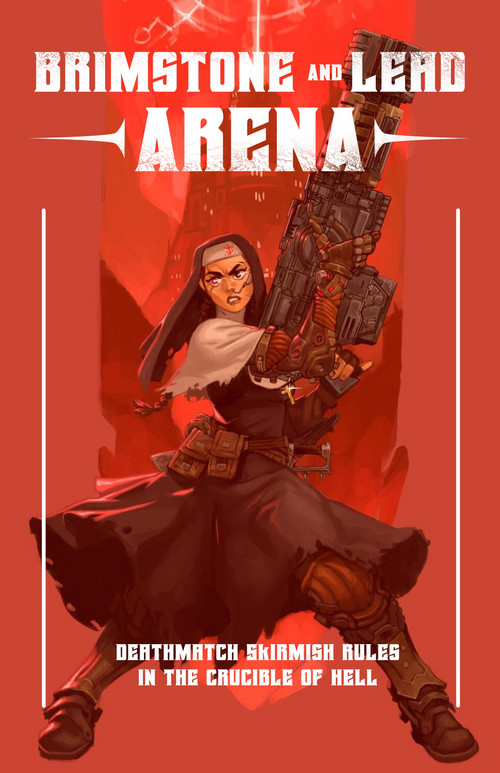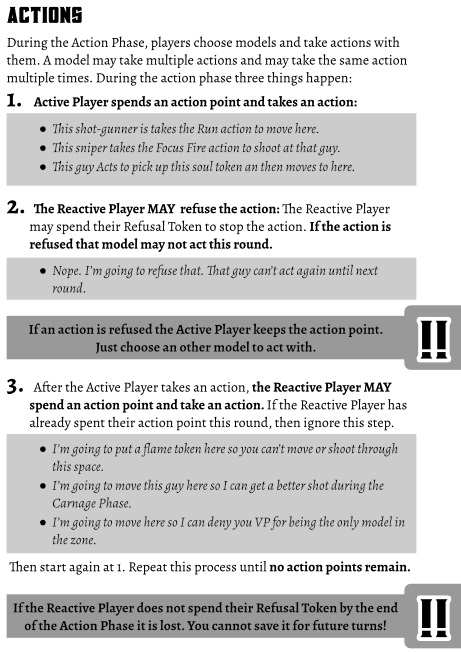How Does Refusal Work?

Brimstone and Lead: Arena uses a modified UGOIGO structure. The Active Player has four action points, while the Reactive Player has only one. After the Active Player takes an action, the Reactive Player may spend their one action point as a response or save it for later.
Doesn’t this mean the Active Player can steamroller their opponent? This is where the refusal mechanic comes into play. Here’s the overview from the rulebook:

This gives the Reactive Player two critical abilities:
- They can stop any one action.
- When they do, that model cannot take any other action.
These two factors mean that if the Active Player has an excellent action, they must live in fear that it will be refused. Instead, they must take lesser actions, trying to bait the Reactive Player into wasting their one refusal so they can act unhindered.
This makes the game into something of a bluffing game. Every time the Active Player acts, the Reactive Player must decide if this is the real danger. Is there a better move on the board they must be afraid of? What is the most important thing on the table right now? Conversely, the Active Player must constantly find other good moves beyond the obvious one. Is there something else on the board that they can sneak under the radar because the Reactive Player is so focused on that sniper on the rooftop?
My goal is that you find yourself agonizing over these choices, sweating bullets and hoping your opponent doesn't see that one really good move right there.
Get Brimstone and Lead: Arena
Brimstone and Lead: Arena
Deathmatch Skirmish Rules in the Crucible of Hell
| Status | In development |
| Category | Physical game |
| Author | dgreen1220 |
| Tags | Tabletop |
More posts
- Making a Grid43 days ago
- Big Changes Coming53 days ago
- Making the Rules Free69 days ago
- Measured Movement and Other UpdatesJun 11, 2024
- New VersionMay 29, 2024
- Now with 100% more filesMay 14, 2024

Leave a comment
Log in with itch.io to leave a comment.